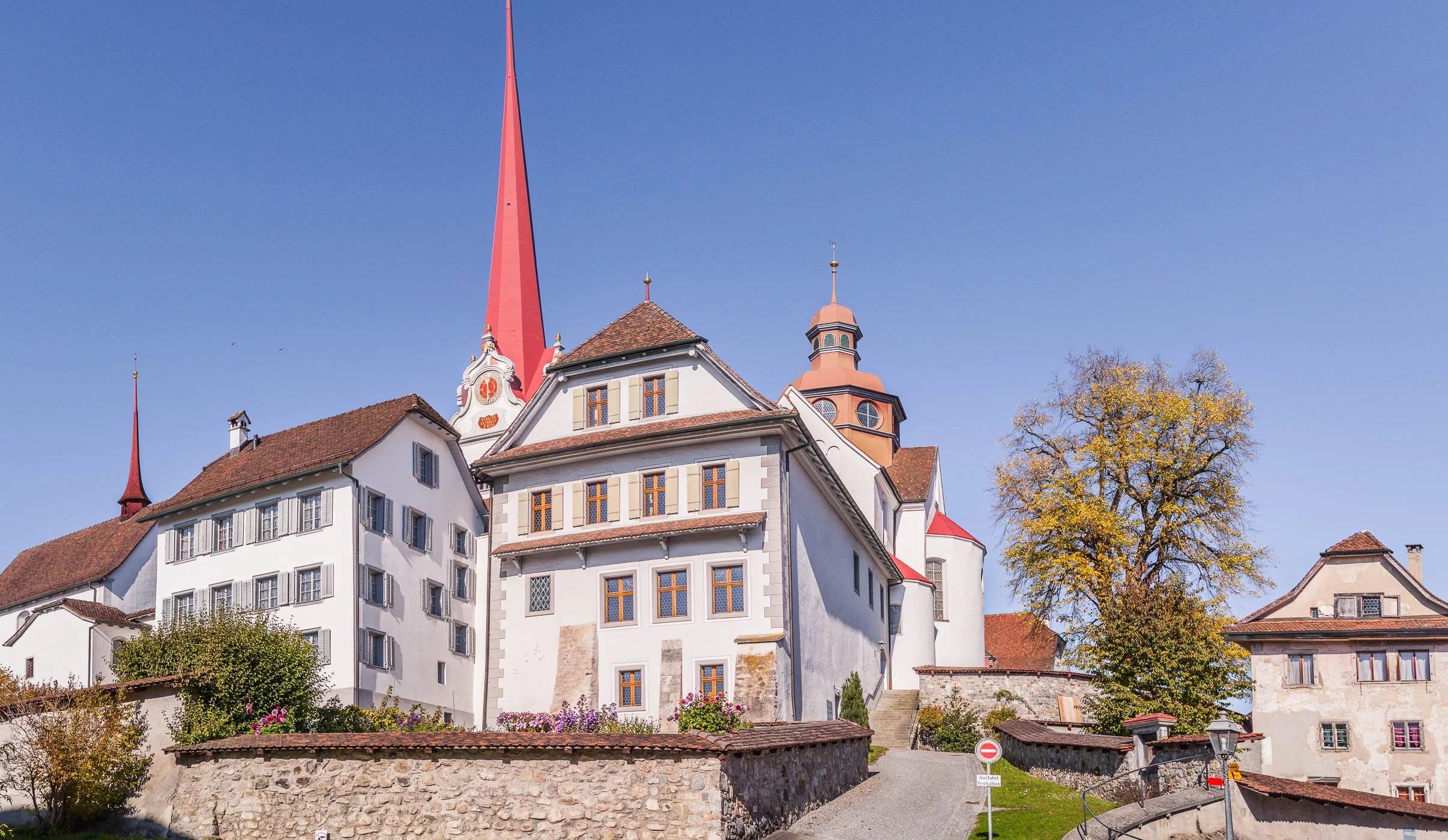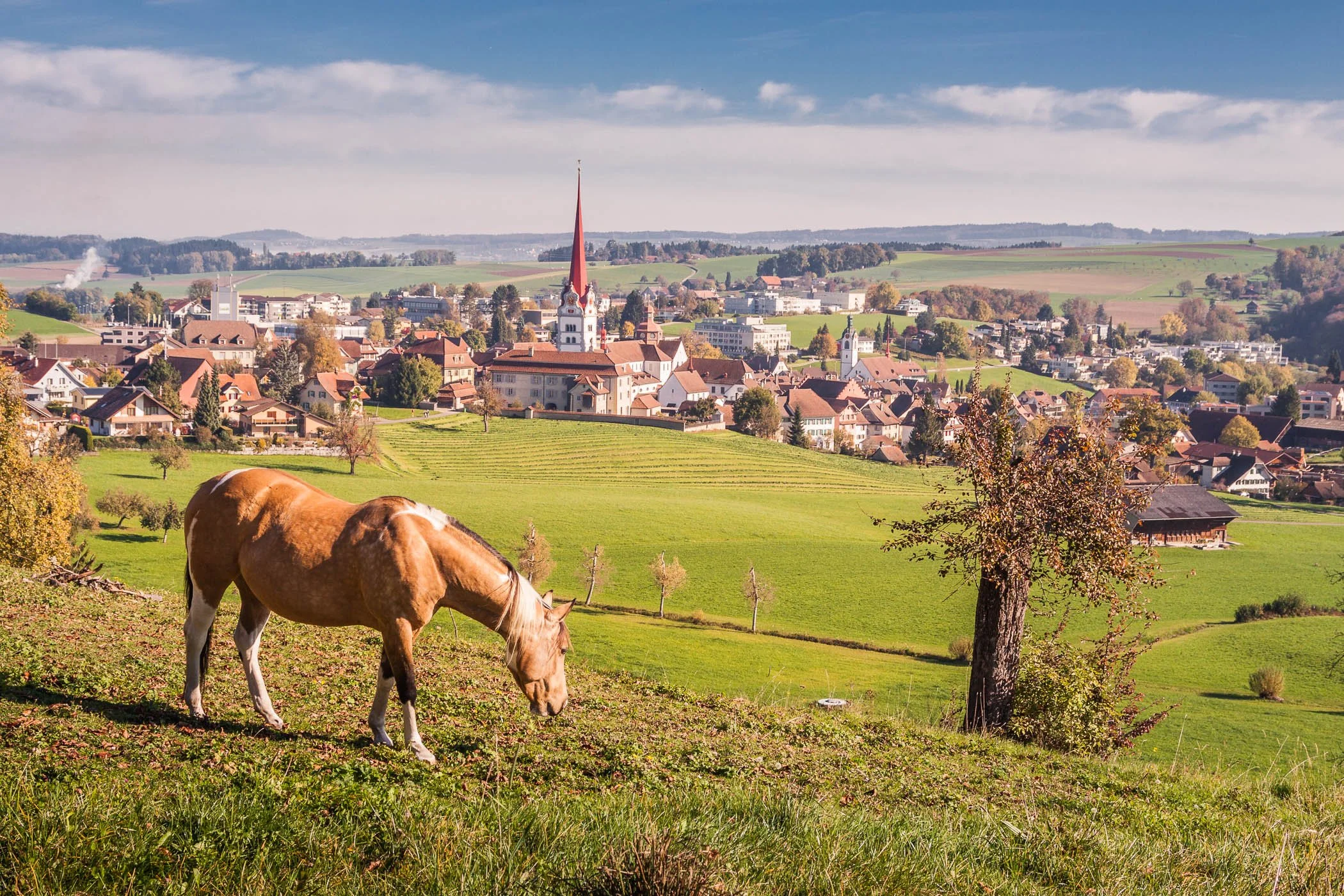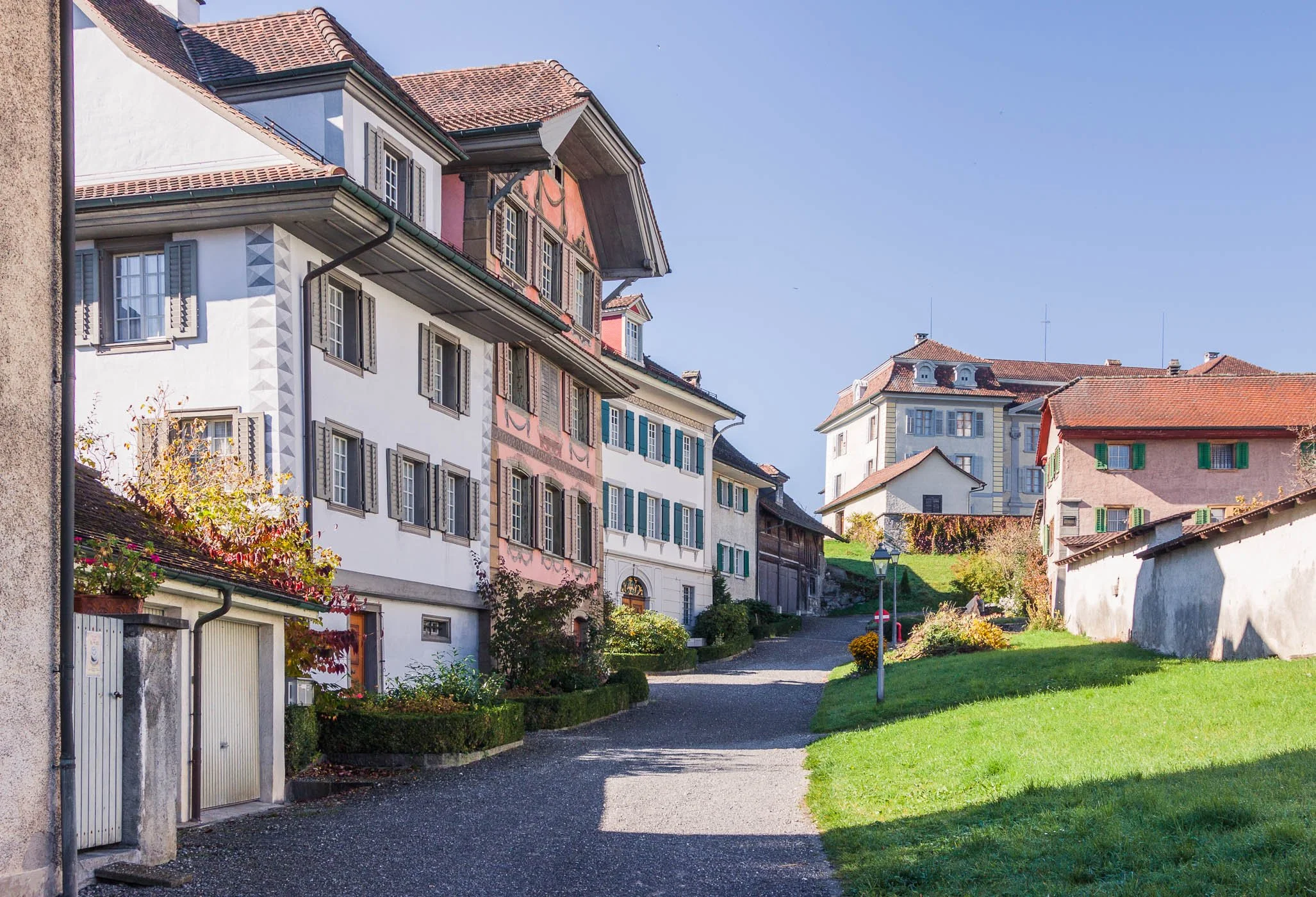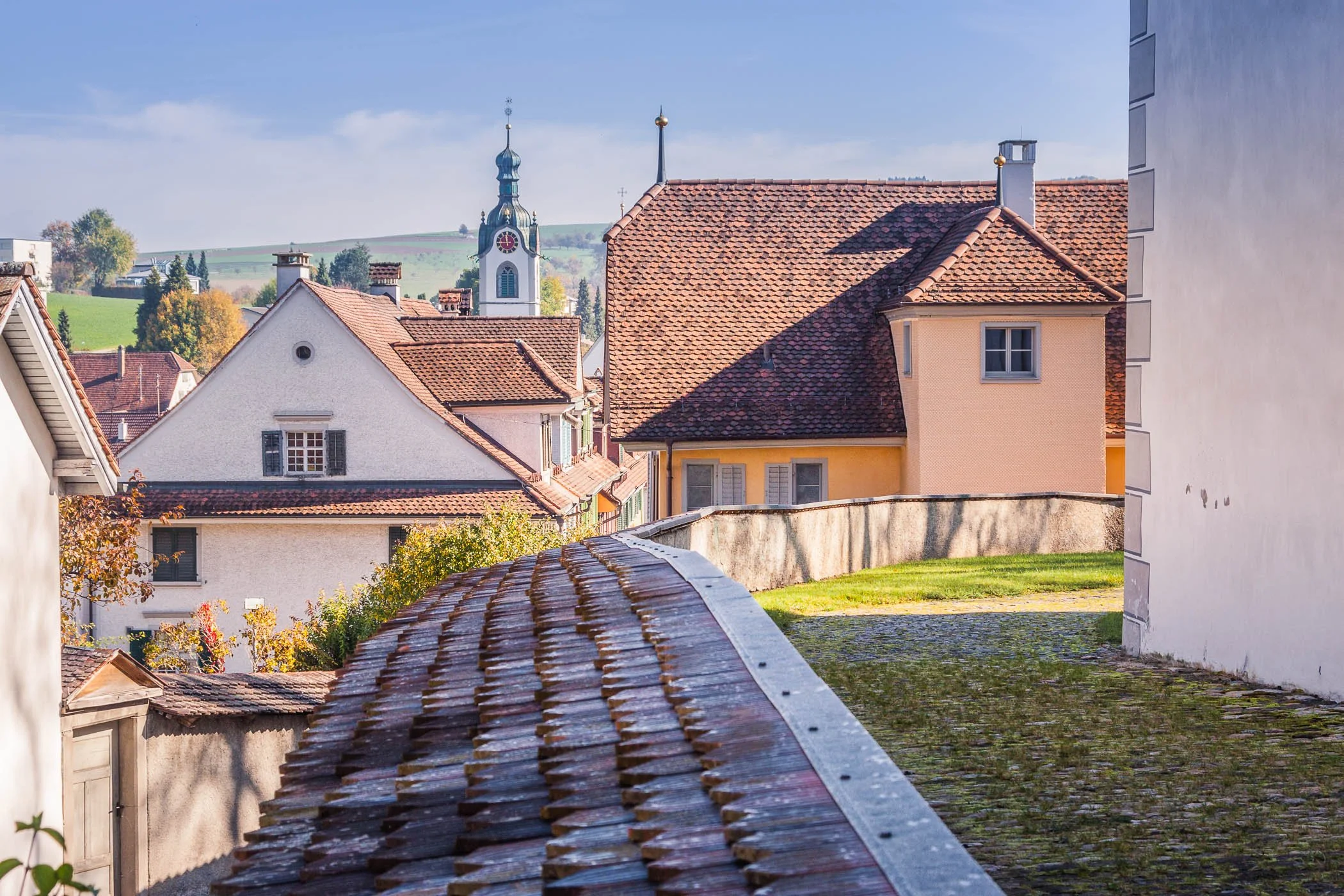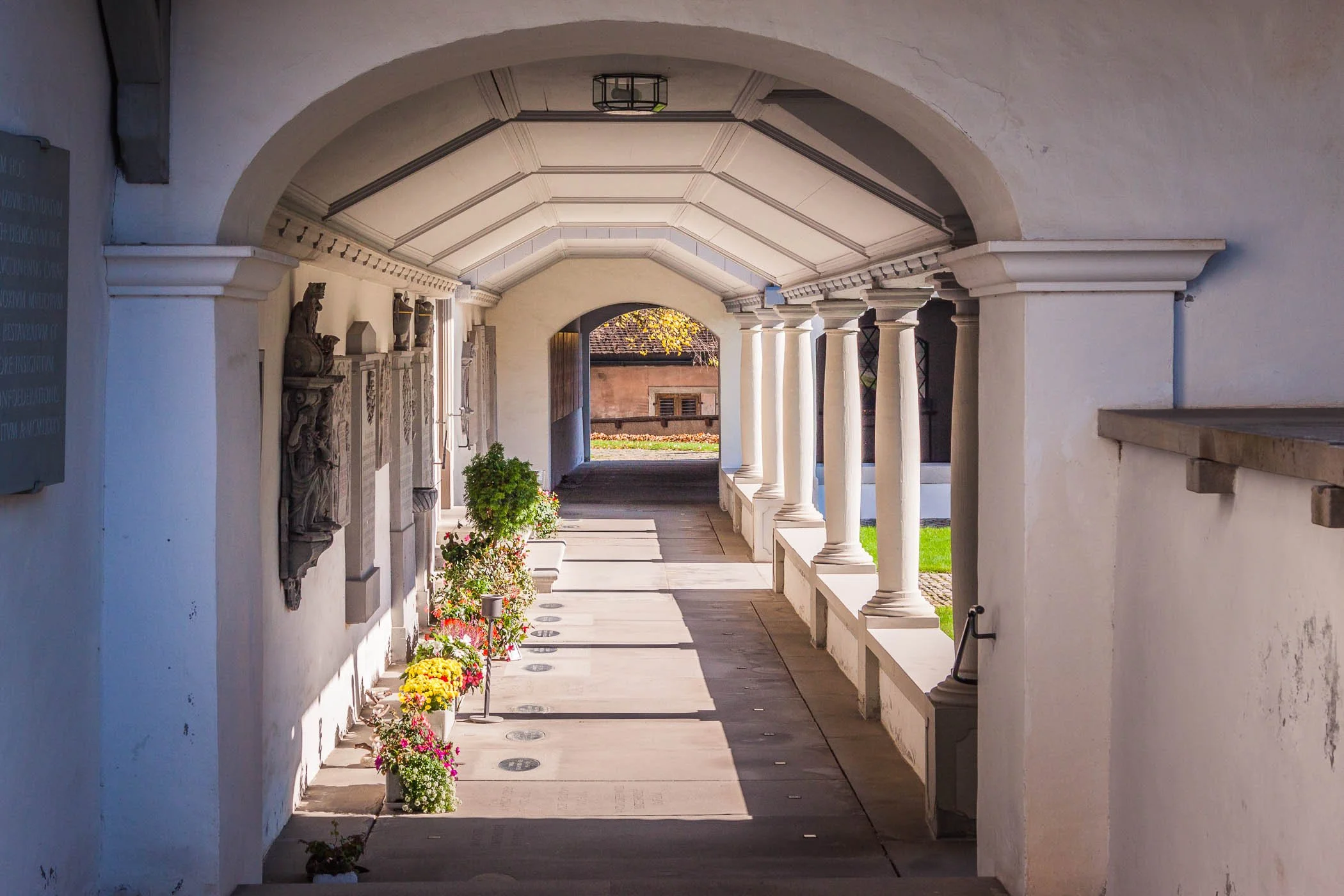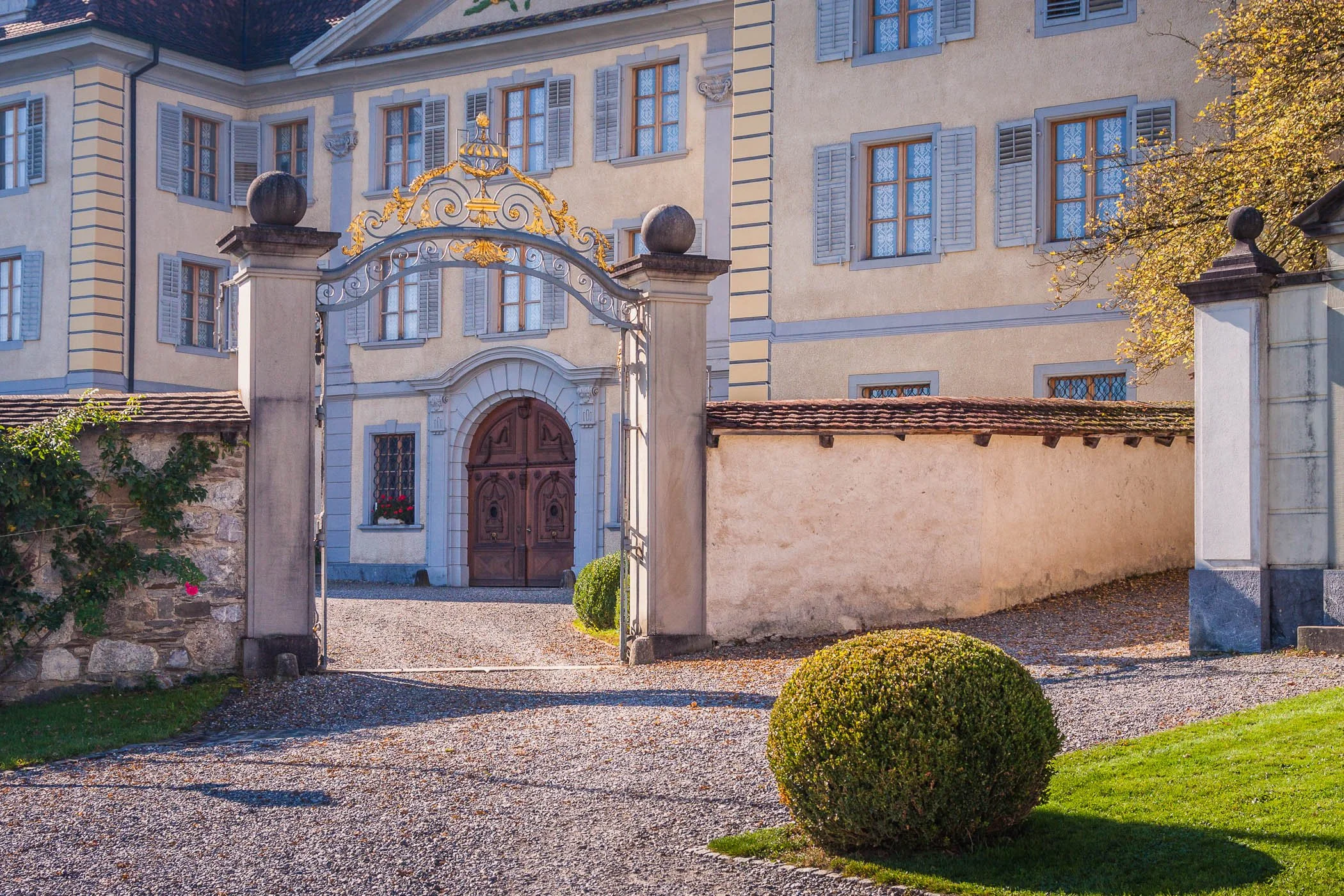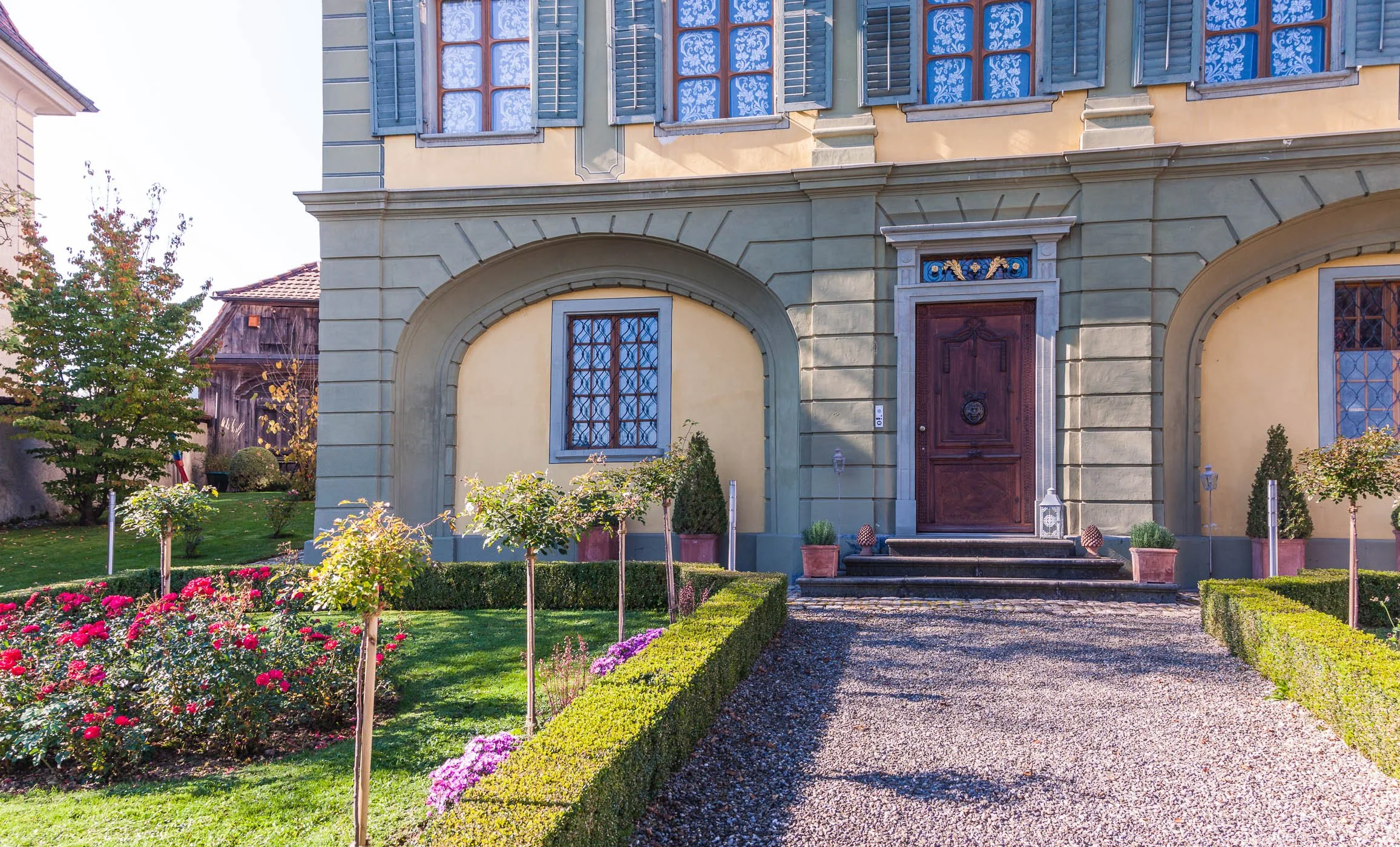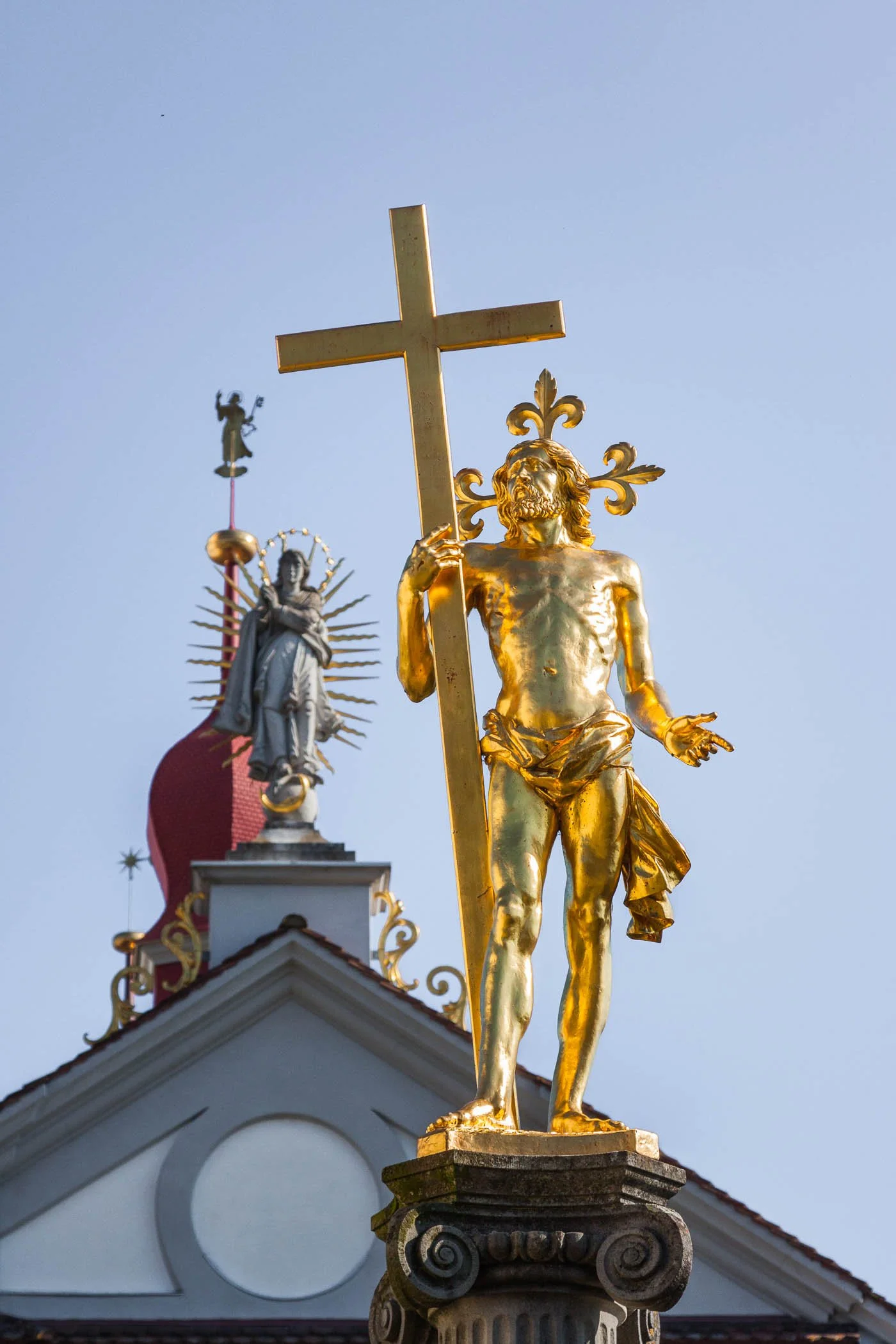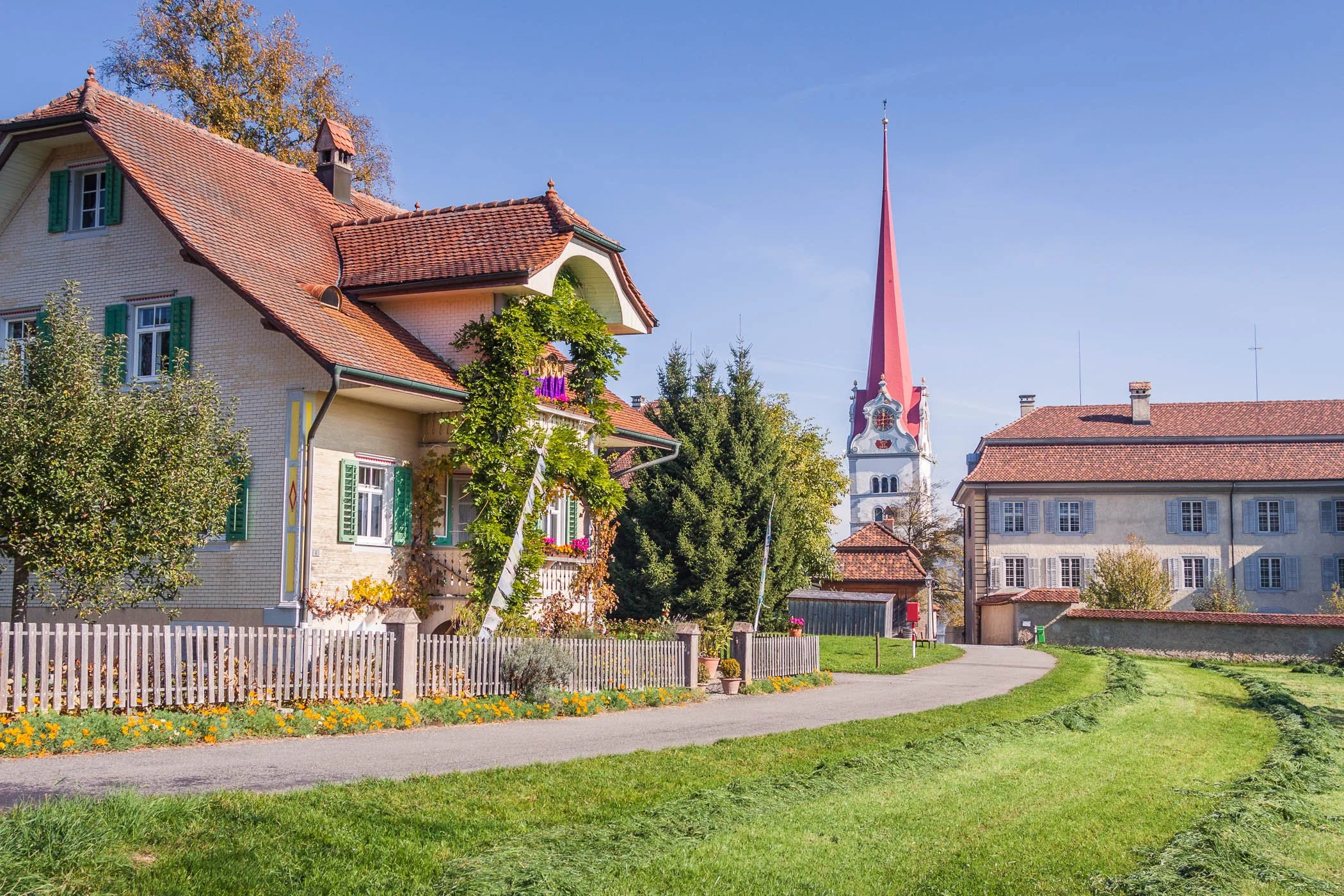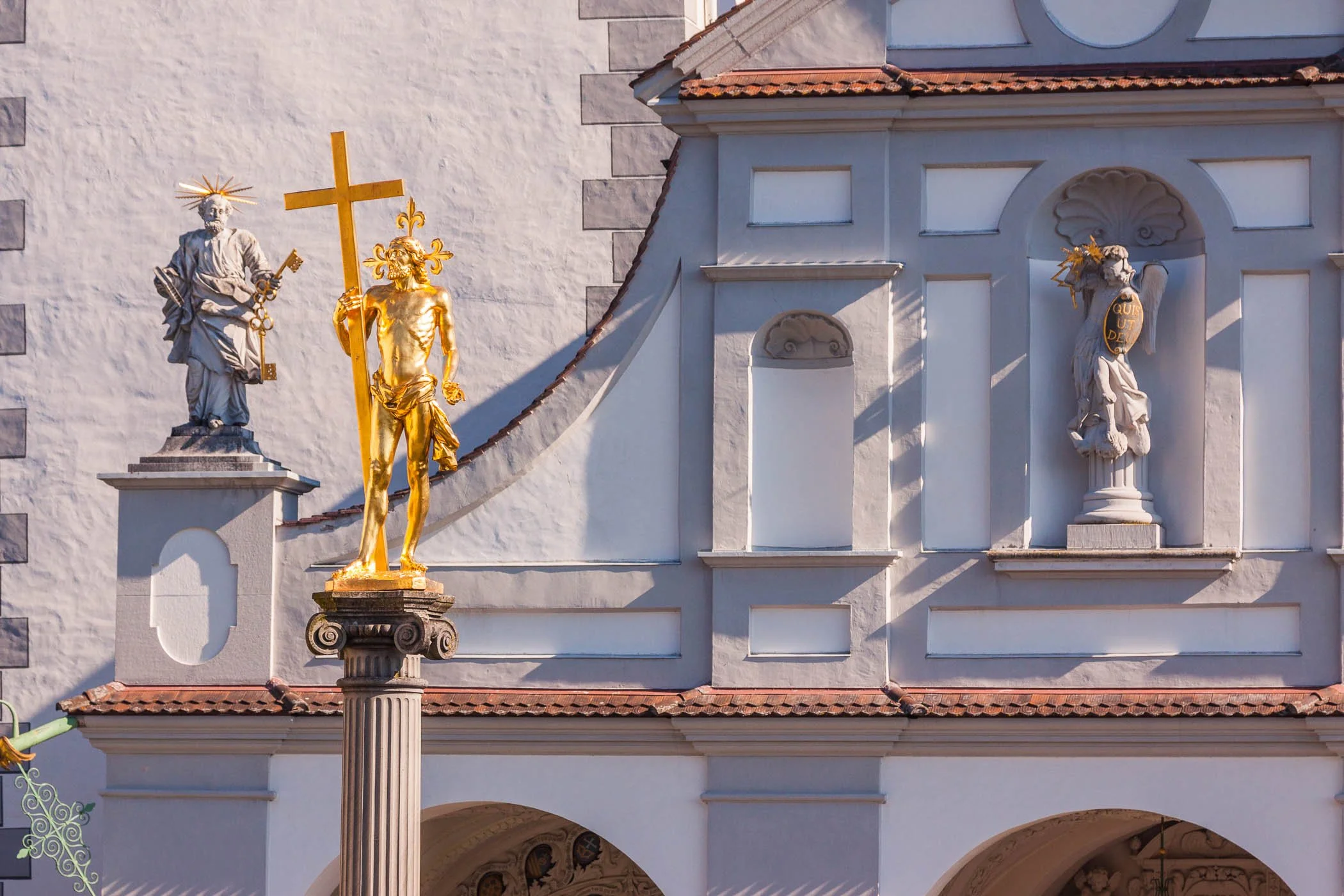
St. Michael's Monastery
A hidden jewel for treasure seekers.
Perched on a small hill that overlooks the town of Beromünster, this monastery is a hidden jewel for treasure seekers that want to discover the truly charming village like atmosphere. St. Michael is not a tradition monastery where monks live in reclusion but one of active preaching and learning. The Baroque church and it’s twenty odd chancellery buildings surrounding it was once referred to as a „Second Rome“. The mix of architectural styles from the different periods in time when they where build create a special atmosphere. The gardens and park grounds are well maintained and are a pleasure to walk and explore.
The interior of the church is beautifully decorated in the Baroque style. Wonderful artworks adorn the ceilings that are supported by beautifully sculpted alters and columns. There is also a beautifully decorated Baptism altar, sculpted with gold leaf created by Propst Christoph Dürler in the year 1778. All this adds to the richness of the interior of the churches design and appeal.
Short history
According to tradition, the son of Count Bero was killed while on a bear hunt. At the location where the body was found, the father had a church built. This sight now serves as a burial place for the Aargau family. It is certain that in 1034/36 Count Ulrich of the kingdom of Lenzburg built a pre-Romanesque basilica preserved to this day and furnished the abbey with extensive estates and rights. In his deed of 1036 the pin is mentioned for the first time.
The Lenzburger Stift came in 1173 to the Counts of Kyburg, 1264 to the Habsburgs. Several times the collegiate church was damaged in this time by raids and other destructions in raids by the kyburgischen Vogtes and in the armed conflicts between the Habsburgs and the Confederates. At the conquest of the Habsburg Aargau by the Confederates in 1415, the abbey with the whole Michelsamt came to Lucerne. The hitherto majority aristocratic canons were now replaced more and more by sons of the Lucerne patrician families. Of their wealth and understanding of art testify still today the stately convent houses (choirs) around the church. Some of them are reminiscent of the builder families by their names (Pfyffer, Hertenstein, Allmend, Fleckenstein, Amrhyn, Cysat etc.). During this time, the monastery employed innumerable artists and artisans, who largely settled in the spot at the foot of the abbey district.
Visiting
Monastery grounds & Chruch
Are open to the general public.
Parking
Street parking available
Address
Chorherrenstift Beromünster
Stiftsverwaltung, Stift 1
6215 Beromünster
tel. 041 930 38 68
Open on:
Mon.-Sat. 10 -12 & 14 -17
Sun. 11 -12
Guided tours by appointment only


